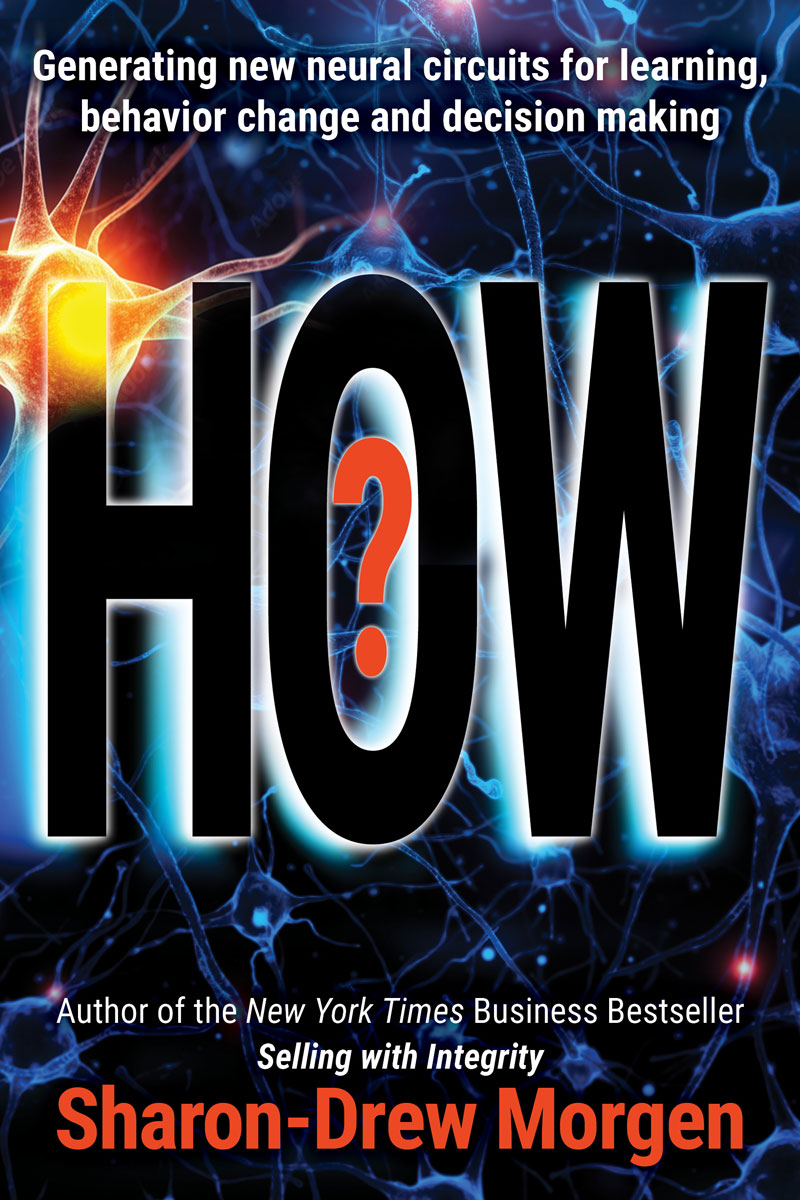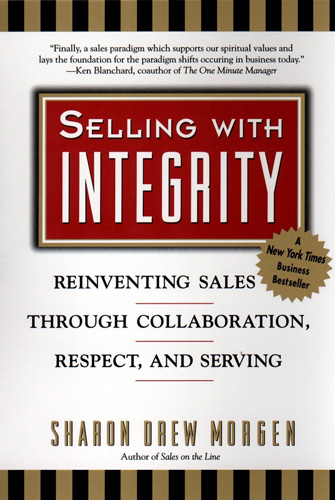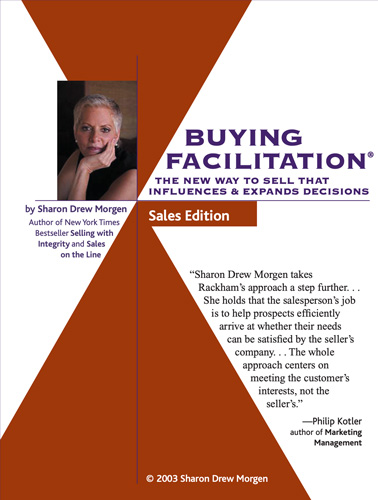 Decades ago I had an idea that questions could be vehicles to facilitate change in addition to eliciting answers. Convention went against me: the accepted use of questions as information gathering devices is built into our culture. But overlooked is their ability, if used differently, to facilitate congruent change.
Decades ago I had an idea that questions could be vehicles to facilitate change in addition to eliciting answers. Convention went against me: the accepted use of questions as information gathering devices is built into our culture. But overlooked is their ability, if used differently, to facilitate congruent change.
WHAT IS A QUESTION?
Standard questions gather information at the behest of an Asker and as such are biased by their words, goals, and intent. As such, they actually restrict our Communication Partner’s responses:
Need to Know Askers pose questions as per their own ‘need to know’, data collection, or curiosity.
These questions risk overlooking more relevant, accurate, and criteria-based answers that are stored in a Responder’s brain beyond the parameters of the question posed.
Why did you do X? vs How did you decide that X was your best option?
Manipulate agreement/response Questions that direct the Responder to respond in a way that fits the needs and expectations of the Asker.
These questions restrict possibility, cause resistance, create distrust, and encourage lying.
Can you see how doing Y would have been better? vs What would you need to consider to broaden your scope of consideration next time?
Doubt Directive These questions, sometimes called ‘leading questions’ are designed to cause Responders to doubt their own effectiveness, in order to create an opening for the Asker.
These narrow the range of possible responses, often creating some form of resistance or defensive lies; they certainly cause defensiveness and distrust.
Don’t you think you should consider doing X? vs Have you ever thought of alternate ways of achieving X?
Data gathering When worded badly, these questions limit the possible answers and overlook more accurate data.
What were the results of your search for Z? vs How did you choose the range of items to search for, and what results did you get?
Standard questions restrict responses to the Asker’s parameters, regardless of their intent or the influencer’s level of professionalism, care, or knowledge. Potentially important, accurate data – not to mention the real possibility of facilitating change – is left on the table and instead may promote distrust, bad data collection, and delayed success.
Decision Scientists end up gathering incomplete data that creates implementation issues; leaders and coaches push clients toward the change they perceive is needed and often miss the real change needed. The fields of sales and coaching are particularly egregious. The cost of bias and restriction is unimaginable.
WHAT IS AN ANSWER?
Used to elicit or push data, the very formulation of conventional questions restricts answers. If I ask ‘What did you have for breakfast?’ you cannot reply ‘I went to the gym yesterday.’ Every answer is restricted by the biases within the question.
- Because we enter conversations with an agenda, intuition, directive, etc., the answers we receive are partial at best, inaccurate at worst, and potentially cause resistance, sabotage, and disregard.
- There are unknown facts, feelings, historic data, goals, etc. that lie within the Responder’s unconscious that hold real answers and cannot be found using merely the Asker’s curiosity.
- By approaching situations with the natural biases inherent in standard questions, Askers only obtain good data from Responder’s with similar backgrounds and thought processes.
- Because influencers are unaware of how their particular bias restricts an answer, how much they are leaving ‘on the table’, or how their questions have skewered potential, they have no concept if there are different answers possible, and often move forward with bad data.
So why does it matter if we’re biasing our questions? It matters because we don’t get accurate answers; it matters because our questions instill resistance; it matters because we’re missing opportunities to serve and support change.
Imagine if we could reconfigure questions to elicit accurate data for researchers or marcom folks; or enable buyers to take quick action from ads, cold calls or large purchases; or help coaching clients change behaviors congruently, permanently, and quickly; or encourage buy-in during software implementations. I’m suggesting questions can facilitate real change.
WHAT IS CHANGE?
Our brain stores data rather haphazardly in our brain making it difficult sometimes to find the right answer when we need it, especially relevant when we want to make new choices.
Over the last decades, I have mapped the sequence of systemic change and designed a way to use questions as directional devices to pull relevant data in the proper sequence so influencers can lead Responders through their own change process without resistance.
This decision facilitation process enables quicker decisions and buy-in – not to mention truly offer a Servant Leader, win/win communication. Let’s look at how questions can enable change.
All of us are a ‘system’ of subjectivity collected during our lifetime: unique rules, values, habits, history, goals, experience, etc. that operates consensually to create and maintain us. It resides in our unconscious and defines us. Without it, we wouldn’t have criteria for any choices, or actions, or habits whatsoever. Our system is hard wired to keep us who we are.
To learn something new, to do something different or learn a new behavior, to buy something, to take vitamins or get a divorce or use new software or be willing to forgive a friend, change must come from within or it will be resisted.
- People hear each other through their own biases. You ask biased questions, receive biased answers, and hit pay dirt only when your biases match. Everyone else will ignore, resist, misunderstand, mishear, act out, sabotage, forget, ignore, etc.
- Due to their biased and restricting nature, standard questions won’t facilitate another’s change process regardless of the wisdom of your comments.
- Without the Responder being ready, willing, and able to change according to their own criteria, they cannot buy, accept, adopt, or change in any way.
To manage congruent change, and enable the steps to achieve buy-in, I’ve developed Facilitative Questions™ that work comfortably with conventional questions and lead Responders to
- find their own answers hidden within their unconscious,
- retrieve complete, relevant, accurate answers at the right time, in the right order to
- traverse the sequenced steps to congruent, systemic change/excellence, while
- avoiding restriction and resistance and
- include their own values and subjective experience.
It’s possible to help folks make internal changes and find their own brand of excellence.
Facilitative Questions™ (FQs) use a new skill set – listening for systems – that is built upon systems thinking and facilitating folks through their unconscious to discover their own answers.
Using specific words, in a very specific sequence, it’s possible to pose questions that are free of bias, need or manipulation and guide congruent change. And it requires trust that Responders have their own answers.
Facilitative Question™ Not information gathering, pull, or manipulative, FQs are guiding/directional tools, like a GPS system. Using specific words in specific sequences they lead Responders congruently, without any bias, down their unique steps of change to Excellence. How would you know if it were time to reconsider your hairstyle? Or What has stopped you from adding ‘x’ to your current skill set until now?
When used with coaching clients, buyers, negotiation partners, advertisements, or even teenagers, these questions create action within the Responder, causing them to recognize internal incongruences and deficiencies, and be guided through their own options. (Because these questions aren’t natural to us, I’ve designed a tool and program to teach the ‘How’ of formulating them.).
The responses to FQs are quite different from conventional questions. By word sequencing, word choice, and placement they cause the Responder to expand their perspective and recognize a broad swath of possible answers. A well-formed FQ would be one we formulated for Wachovia Bank to open a cold call:
How would you know when it’s time to consider adding new banking partners for those times your current bank can’t give you what you need?
This question shifted the response from 100 prospecting calls from 10 appointments and 2 closes over 11 months to 37 meetings and 29 closes over 3 months. FQs found the right prospects and garnered engagement immediately.
Instead of pulling data, you’re directing the Responder’s unconscious to where their answers are stored. It’s possible Responders will ultimately get to their answers without Facilitative Questions, but using them, it’s possible to help Responders organize their change criteria very quickly accurately. Using Facilitative Questions, we must
- Enter with a blank brain, as a neutral navigator, servant leader, with a goal to facilitate change.
- Trust our Communication Partners have their own answers.
- Stay away from information gathering or data sharing/gathering until they are needed at the end.
- Focus on helping the Other define, recognize, and understand their system so they can discover where it’s broken.
- Put aside ego, intuition, assumptions, and ‘need to know.’ We’ll never understand another’s subjective experience; we can later add our knowledge.
- Listen for systems, not content.
FQs enable congruent, systemic, change. I recognize this is not the conventional use of questions, but we have a choice: we can either facilitate a Responder’s path down their own unique route and travel with them as Change Facilitators – ready with our ideas, solutions, directions as they discover a need we can support – or use conventional, biased questions that limit possibility.
For change to occur, people must go through these change steps anyway; we’re just making it more efficient for them as we connect through our desire to truly Serve. We can assist, or wait to find those who have already completed the journey. They must do it anyway: it might as well be with us.
I welcome opportunities to put Facilitative Questions into the world. Formulating them requires a new skill set that avoids any bias (Listening for Systems, for example). But they add an extra dimension to helping us all serve each other.
____________
Sharon-Drew Morgen is a breakthrough innovator and original thinker, having developed new paradigms in sales (inventor Buying Facilitation®, listening/communication (What? Did you really say what I think I heard?), change management (The How of Change™), coaching, and leadership. She is the author of several books, including her new book HOW? Generating new neural circuits for learning, behavior change and decision making, the NYTimes Business Bestseller Selling with Integrity and Dirty Little Secrets: why buyers can’t buy and sellers can’t sell). Sharon-Drew coaches and consults with companies seeking out of the box remedies for congruent, servant-leader-based change in leadership, healthcare, and sales. Her award-winning blog carries original articles with new thinking, weekly. www.sharon-drew.com, https://sharondrew1.substack.com/, and https://medium.com/@sharondrew_9898/. She can be reached at sharondrew@sharondrewmorgen.com.






56 thoughts on “Questioning Questions, by Sharon-Drew Morgen”
Pingback: Questioning Questions - Best Practice In Sales and Marketing
Pingback: Inside Curiosity - My Blog
Pingback: Inside Curiosity Medical Alert – Medical Alert Systems
Pingback: Inside Curiosity – Train Models and More
Pingback: Inside Curiosity — Unified
Pingback: Inside of Curiosity | Movie Preview
Pingback: Some Truths about Systems | Sharon-Drew Morgen
Pingback: Influencing Congruent, Unbiased Change: serving with integrity | Sharon-Drew Morgen
Pingback: How Sales Overlooks Buyers: Essay and Q&A | Sharon-Drew Morgen
Pingback: How Sales Overlooks Buyers: Essay and Q&A | What? Did You Really Say What I Think I Heard?
Pingback: Sellers Ask the Wrong Questions | Sharon-Drew Morgen
Pingback: Sellers Ask the Wrong Questions | What? Did You Really Say What I Think I Heard?
Pingback: Sellers Ask the Wrong Questions | | Best Practice In Sales and Marketing
Pingback: Influencing Congruent, Unbiased Change: serving with integrity | What? Did You Really Say What I Think I Heard?
Pingback: The Big Push: why sellers, doctors, coaches, and leaders, don’t effect permanent change | Sharon-Drew Morgen
Pingback: Sharon-Drew Morgen » We Don’t Know How to Hear Each Other: how biases distort our conversations
Pingback: Sharon-Drew Morgen » How, Why, and When Buyers Buy
Pingback: Sharon-Drew Morgen » Inside Curiosity
Pingback: Sharon-Drew Morgen » Resolving Unconscious Bias
Pingback: Discovery Calls : Understanding your customer is the key to successful transactions - Pitch.Link
Pingback: Sharon-Drew Morgen » FACILITATIVE QUESTIONS: Questions that facilitate change
Pingback: FACILITATIVE QUESTIONS: Questions that facilitate change | What? Did You Really Say What I Think I Heard?
Pingback: Sharon-Drew Morgen » Listening Biases: How Influencers Unwittingly Restrict Possibilities
Pingback: Sharon-Drew Morgen » Don’t You Realize Selling Doesn’t Cause Buying?
Pingback: Sharon-Drew Morgen » How, Why, and When Buyers Buy
Pingback: What You Need to Know about Systems and How they Affect Change | What? Did You Really Say What I Think I Heard?
Pingback: Questions: the new superpower | What? Did You Really Say What I Think I Heard?
Pingback: Sharon-Drew Morgen » Questions: the new superpower
Pingback: Sharon-Drew Morgen » Conscious Failing
Pingback: Conscious Failing | What? Did You Really Say What I Think I Heard?
Pingback: Conscious Failing | | Best Practice In Sales and Marketing
Pingback: Sharon-Drew Morgen » Prospects Aren’t Always Prospects
Pingback: Prospects Aren't Always Prospects | What? Did You Really Say What I Think I Heard?
Pingback: Make the Phone Your Friend: best practices for sellers, healthcare providers, and consultants | What? Did You Really Say What I Think I Heard?
Pingback: Sharon-Drew Morgen » Make the Phone Your Friend: best practices for sellers, healthcare providers, and consultants
Pingback: The Real “Buyer’s Journey” or, the reason selling doesn’t cause buying. | What? Did You Really Say What I Think I Heard?
Pingback: Resolving Unconscious Bias | What? Did You Really Say What I Think I Heard?
Pingback: How, Why, and When Buyers Buy | What? Did You Really Say What I Think I Heard?
Pingback: Sharon-Drew Morgen » We Don’t Know How to Hear Each Other: how natural biases distort our conversations
Pingback: Servant Leadership: new skills to serve others, and why the old ones don’t work | What? Did You Really Say What I Think I Heard?
Pingback: Sharon-Drew Morgen » Stop Trying to Persuade; Facilitate Congruent Decision Making Instead
Pingback: Sharon-Drew Morgen » Change Facilitation: the essential skill for turbulent times
Pingback: How, Why, and When Buyers Buy | Sharon-Drew Morgen
Pingback: What, Exactly, is Facilitation? Plans for an Institute | Sharon-Drew Morgen
Pingback: Inside Curiosity | What? Did You Really Say What I Think I Heard?
Pingback: Don’t You Realize Selling Doesn’t Cause Buying? | What? Did You Really Say What I Think I Heard?
Pingback: Conscious Failing - Sharon-Drew
Pingback: Servant Leadership: new skills to serve others, and why the old ones don’t work - Sharon-Drew
Pingback: Resolving Unconscious Bias - Sharon-Drew
Pingback: Questions Aren’t All They’re Cracked Up To Be - Sharon-Drew
Pingback: Questions Aren’t All They’re Cracked Up To Be – What? Did You Really Say What I Think I Heard?
Pingback: Influencing Congruent, Unbiased Change: serving with integrity - Sharon-Drew
Pingback: Prospects Aren't Always Prospects - Sharon-Drew
Pingback: Influencers vs. Facilitators: essay on enabling change congruently - Sharon-Drew
Pingback: Influencers vs. Facilitators: essay on enabling change congruently – What? Did You Really Say What I Think I Heard?
Pingback: The Big Push: why sellers, doctors, coaches, and leaders, don’t effect permanent change - Sharon-Drew